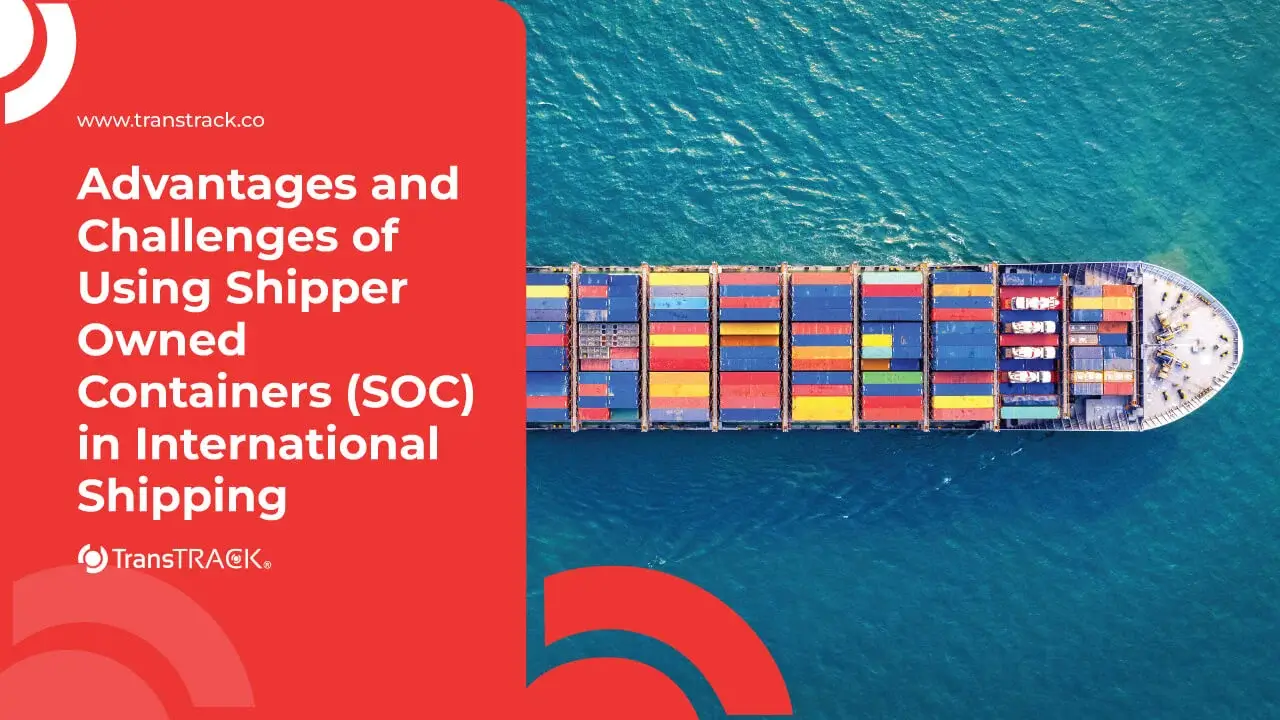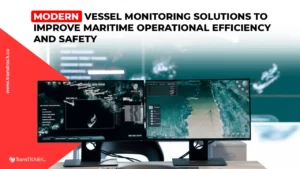Advantages and Challenges of Using Shipper Owned Containers (SOC) in International Shipping
Posted on April 21, 2025 by Nur Wachda Mihmidati

In the world of international logistics, efficient and safe delivery of goods is a top priority. One option that is gaining popularity among shippers is the Shipper Owned Container (SOC), where the container is used and managed directly by the shipper, rather than the shipping company. The use of SOC offers various advantages, such as long-term cost savings and flexibility in shipment management. However, while SOCs have many benefits, there are also challenges that need to be faced, such as container maintenance and a more complex documentation process. This article will discuss in detail about what SOCs are, the benefits and challenges of using them, and the procedures that need to be followed to ensure a smooth shipment. Check out the full explanation through the following article TransTRACK!
What is a shipper owned container?
A Shipper Owned Container (SOC) is a container that is owned by the shipper, not provided by the shipping company. By using a SOC, the shipper is fully responsible for the container, including its management, maintenance, and return. The main advantages of using SOCs are the avoidance of demurrage and detention charges usually imposed by shipping companies, as well as more flexibility in routing and delivery schedules. However, the use of SOC also brings with it greater liability and potentially higher initial costs, especially if containers have to be purchased or leased from third parties.
What is the difference between SOC and COC?
The main difference between a Shipper Owned Container (SOC) and a Carrier Owned Container (COC) lies in the ownership and responsibility of the container used in the shipping process.
| Aspects | Shipper Owned Container (SOC) | Carrier Owned Container (COC) |
| Ownership | Owned by the shipper | Owned by the shipping company (carrier) |
| Container Source | Self-provided by shipper | Provided by carrier upon delivery |
| Demurrage & Detention Charges | Not charged, as it does not belong to the carrier | Charged if the container is returned late |
| Flexibility | More flexibility in routes and schedules | Limited to carrier rules and routes |
| Responsibility | Shipper is responsible for the condition and return of the container | Carrier is responsible during the transportation period |
| Container Availability | Depends on the shipper | Carrier provides according to their shipping schedule |
| Initial Cost | May be higher (due to container purchase/lease) | Included in shipping costs |
In summary, SOC is suitable for frequent export/import shippers with more control over logistics, while COC is more practical for occasional shipments with full support from the shipping company.
Advantages of Using Shipper Owned Containers
Using a self-owned container (SOC) provides a number of strategic benefits, especially for shippers who prioritize cost efficiency and logistical flexibility. Here are some of the key advantages:
- Cost-effective for long-term use, free from demurrage and detention fees commonly charged by shipping companies, making it more economical for long-duration shipments.
- Shipper has full control over container usage, including routes, schedules, and return points, according to operational needs.
- Suitable for one-way shipping, ideal for routes without container return to origin, such as exports to remote locations or projects with a fixed final destination.
Challenges and Risks of Using SOC
While SOCs offer many advantages, there are some challenges and risks to consider before using them. Here are some things to be aware of:
- Container maintenance and certification, the shipper is responsible for the physical condition of the container, including inspections and certifications (such as CSC plates) so that the container meets international standards for ocean transportation.
- Since the container does not belong to the carrier, the customs reporting and documentation process can be more complex and requires special attention to avoid delays or legal issues.
- Not all carriers accept SOCs, some shipping companies have limited policies regarding the acceptance of SOCs, so shippers need to make sure in advance whether the intended route or ship can accept self-owned containers.
Procedure for Using Shipper Owned Container
To ensure the smooth use of SOC in the shipping process, the following steps need to be carried out by the shipper:
- Container Preparation Make sure the container is in good condition, fit for use, and has international safety certifications such as CSC plate (Convention for Safe Containers).
- Check and Verify with Carrier Confirm in advance with the shipping company whether they accept the use of SOC for the planned shipping route.
- When filling out the shipping instruction document, include that the container used is SOC, complete with the container number, size, and type.
- Documentation and Customs Process Prepare supporting documents such as proof of container ownership and technical certificates. The customs clearance process for SOC is generally more complex than COC.
- Transport to Port and Loading Once the documents are complete, the container can be taken to the port for the loading process. Make sure the stuffing and sealing process is done according to safety standards.
- Handling at the Port of Destination Upon arrival at the port of destination, the container can be directly picked up by the consignee without the need to return it to the carrier. However, the responsibility for the container remains with the owner.
The use of Shipper Owned Container (SOC) provides a range of benefits, from long-term cost savings to flexibility in logistics management. However, as with other types of shipping, shippers need to be mindful of the challenges and procedures involved, including container maintenance and more complex customs documentation.

To improve security and efficiency during the shipping process, TransTRACK offers an innovative solution with an e-seal that can be installed on SOC. e-seal TransTRACK enables real-time monitoring of container conditions, reduces the risk of manipulation or loss of goods, and ensures compliance with international regulations. Using this technology, you can manage your SOC shipments more safely and efficiently.
Contact TransTRACK now to get more information about our e-seal solution and how our technology can help speed up and secure your shipments.
Recent Post
Topic :
Recommended Articles

 Bahasa Indonesia
Bahasa Indonesia







